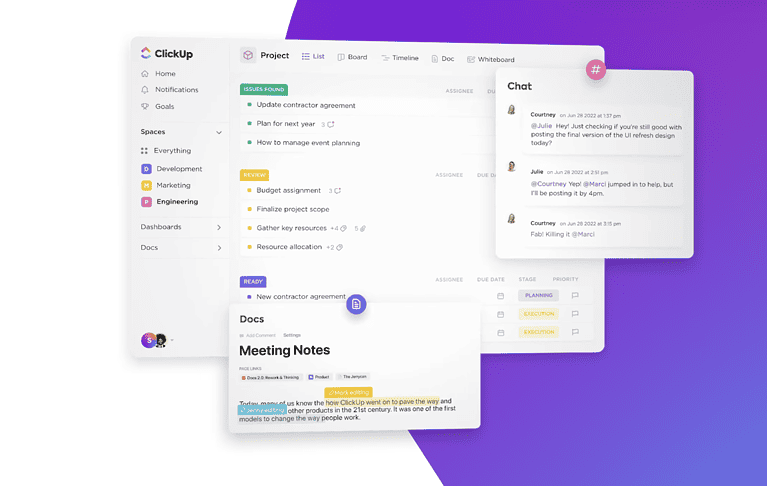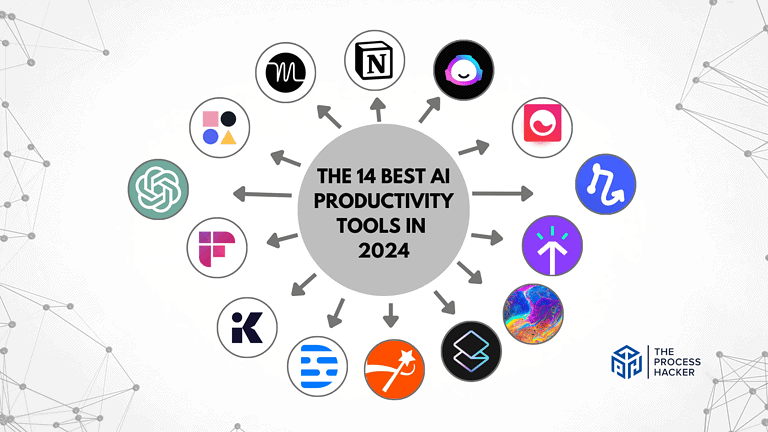How to Do Your Weekly Review: Boost Productivity in Just 60 Minutes
Feeling overwhelmed and constantly chasing deadlines is a common experience in today’s fast-paced world. However, a simple solution can help you regain control and boost your productivity: the weekly review.
This practice, advocated by productivity experts, provides a structured approach to reflect on the previous week and prepare for the upcoming one. By dedicating just 60 minutes each week, you can clear your mental clutter, set priorities, and gain a renewed sense of purpose. Imagine a life with no missed deadlines, a clear understanding of direction, and the confidence to tackle each day with focus.
This comprehensive guide will walk you through the step-by-step process of conducting a weekly review, empowering you to control your time and unlock your full potential. Get ready to transform your productivity and achieve your goals.
What is a Weekly Review?
A weekly review is like a mental decluttering session. It’s your chance to step back, assess your progress, and recalibrate your focus for the week ahead. Think of it as a pit stop in the race of life, where you refuel, check your map, and ensure you’re still on the right track.
Why is this process so crucial? Let’s break it down:
- Clarity and Focus: A weekly review helps you eliminate the noise and identify what truly matters. It’s easy to get caught up in the day-to-day hustle, but taking this time allows you to see the bigger picture and align your actions with your goals.
- Prioritization Made Easy: Ever feel overwhelmed by a never-ending to-do list? A weekly review helps you prioritize tasks, ensuring you’re focusing on what will make the biggest impact. No more spinning your wheels on low-value activities.
- Stress Reduction: When your mind is clear and your priorities are set, stress and anxiety naturally diminish. You’ll feel more in control and less reactive to unexpected challenges.
- Productivity Boost: By planning and reflecting, you set yourself up for a more productive week. You’ll be able to hit the ground running on Monday morning with a GTD weekly review.
If you’re looking for a way to boost your productivity, reduce stress, and gain greater control over your life, the weekly review is the ideal solution. It’s a small investment of time that yields significant returns.
Step-by-Step Guide to Conducting an Effective Weekly Review
Let’s explore the specifics of conducting a weekly review that truly makes a difference. This is about creating a structured process for taking charge of time and accomplishing goals.
Step 1: Reflect on the Past Week
The first step in any successful weekly review is to examine the week that just unfolded.
Think of it as a post-game analysis. You wouldn’t just jump into the next week’s match without reviewing the last one, right? The same principle applies here. Take a few moments to assess your wins, losses, and areas for improvement.
Here’s how:
- Weekly Review of Completed Tasks and Achievements: Grab your to-do list, calendar, or other tools you use to track your work. Look at everything you accomplished this week. Did you finish that big project? Check off those nagging tasks. Celebrate those wins, no matter how small they may seem. Recognizing your progress is key to staying motivated and building momentum.
- Analyze What Worked Well and What Didn’t: Now, it’s time to get a little more introspective. What strategies or tactics helped you achieve your goals? Did you find a new productivity hack that worked like a charm? On the flip side, what challenges did you face? Did any roadblocks slow you down? Understanding what worked and didn’t is crucial for refining your approach and adjusting as needed.
- Identify any Unfinished Tasks or Loose Ends: Next, look at your to-do list and see if there are any tasks that weren’t completed this week. Maybe some lingering emails need responses, or a few loose ends that need to be tied up. Note these items so you can address them in the coming week.
Step 2: Clear Your Mind and Workspace
This step is all about creating a clean slate, both mentally and physically. It’s like decluttering your home before inviting guests over; everything has its place, and you can focus on the important interactions without distractions.
- Process Notes, Emails, and Loose Papers: Gather all those scattered notes, emails, and random papers accumulated throughout the week. Review each item, decide whether it’s actionable, file it away for reference, or discard it. Don’t let these loose ends hang over your head any longer.
- Update Your Task List Management System: Transfer any new tasks or action items from your notes and emails into your preferred task management system. This ensures that nothing slips through the cracks and that you have a centralized location for all your commitments.
- Clear Your Physical and Digital Workspace: Take a few minutes to tidy up your desk, organize your files, and declutter your computer desktop. A clean and organized workspace promotes a clear and focused mind.
Step 3: Review Your Goals and Projects
This is the compass check of your weekly review management. It’s time to zoom out and ensure your daily actions align with your broader aspirations.
- Evaluate Progress on Short-Term and Long-Term Goals: Review your short-term and long-term goals weekly. Are you making progress? Are there any adjustments that need to be made? This regular check-in helps you stay focused and motivated, even when the finish line seems far away.
- Update Project Lists and Next Actions: Review your project lists weekly and identify the next action steps for each one. This ensures you always have a clear path forward, even for complex projects.
- Identify any New Projects or Ideas: As you review your goals and projects weekly, new ideas or opportunities may surface. Capture these in a dedicated list or notebook. They could be the seeds of future success.
Step 4: Plan for the Upcoming Week
Before you wrap up your weekly review, looking forward and setting the stage for the next seven days as a task manager is essential. This step ensures that you’re not just reacting to what comes your way but actively shaping your week to align with your personal and professional goals. Here’s how you can effectively plan for the upcoming week:
- Review your new and previous calendar data for the week ahead: Start by looking at any pre-existing commitments. This will give you a clear view of how much time you actually have available for new tasks.
- Set priorities and goals for the coming week: Identify the key outcomes you want to achieve. Prioritizing these will help you focus on what matters rather than just being busy.
- Schedule important tasks and appointments: Block time in your calendar for high-priority activities. This not only commits time to these tasks but also reduces the stress of figuring out when you’ll do them.
By following these steps, you’ll enter each week with a clear plan and a proactive mindset, setting yourself up for success.
Key Considerations for a Successful Weekly Review
A successful weekly review hinges not just on what you review but also on when and where you do it. The right setting and timing can make a substantial difference in how effective this process is for you. Let’s explore how to create an optimal environment for your weekly reflections.
Choosing the Right Time and Place
Selecting an appropriate time and place for your weekly review is crucial for making it a habit and ensuring its effectiveness.
Choose a day and time that you can consistently commit to each following week, like Friday afternoon to close the week or Sunday evening to prepare for the next. Consistency helps to turn this into a routine, making it more likely that you’ll stick with it.
The space where you conduct your weekly review should help you focus. Whether it’s a quiet corner of your home or a dedicated office space, ensure it’s free from distractions that could distract you from your planning.
Before you begin, ensure you have everything you need—your digital tools, a planner, or any specific reports that provide insights into your week’s activities. All the necessary tools make your weekly review process smoother and more effective.
By thoughtfully choosing when and where you conduct your weekly reviews, you’ll be more likely to engage deeply with the process and derive meaningful insights that will propel you forward into the next week.
Customizing Your Weekly Review Checklist
Creating a personalized checklist for your weekly review is a critical step in making this process work effectively.
Your weekly review forces you to have specific responsibilities and aspirations. List tasks and goals aligning with your short-term projects and long-term visions. This makes your review sessions relevant and focused.
Your checklist should cover all areas of your life to maintain a balanced approach. This includes professional deadlines and projects, personal appointments, and even time for self-care. Integrating these elements ensures that no area of your life is neglected in your planning.
As your goals and responsibilities evolve, so should your checklist. Regular updates will keep it relevant and ensure that it continues to effectively serve your changing needs. This might mean adding new items, removing tasks that no longer serve you, or adjusting your priorities based on recent insights.
As you tailor your weekly review checklist to your specific needs, you’ll make this practice a genuinely effective part of your productivity toolkit, enabling you to handle your week with confidence and clarity.
Taking Your Weekly Review to the Next Level
To truly benefit from your weekly review, it’s essential to not just go through the motions but actively enhance its structure to serve your evolving needs better. Elevating your review process involves more than ticking off completed tasks—it’s about aligning your daily life with your long-term vision.
Incorporating Goal-Setting and Self-Reflection
This is where the magic happens. Integrating goal-setting and self-reflection into your weekly review will transform it into a powerful tool for achieving lasting success.
- Review Progress Towards Annual Goals: Don’t let those big dreams collect dust on a shelf. Regularly revisit your annual goals during your weekly review. Are you making steady progress? Are any adjustments needed to stay on track? This step ensures you always move in the right direction, even when life gets hectic.
- Reflect on Personal Growth and Lessons Learned: Every week brings new experiences, challenges, and growth opportunities. During your review, reflect on the lessons you’ve learned. Did you overcome any obstacles? Did you discover any new strengths or weaknesses? This self-awareness is key to personal and professional development.
- Set Intentions for Continuous Improvement: As you wrap up your review, take a proactive approach to the week ahead. Set clear intentions for areas you want to focus on or habits you want to cultivate. This intentional approach helps you stay motivated and focused on making positive changes.
Leveraging Technology for Enhanced Reviews
Embrace the digital tools at your disposal to streamline your weekly review and make it even more impactful.
A wealth of productivity apps and tools are available to help you manage tasks, track goals, and stay organized. Experiment with different options to find what works best for you. Technology can make your review process smoother and more efficient, from calendar apps to note-taking tools.
One of my favorites is Sunsama, which integrates with Google Calendar and allows you to schedule tasks and goals directly into your daily agenda. This helps you stay on top of your tasks and encourages you to prioritize what’s most important for each day.
If you find yourself doing the same tasks week after week, look for ways to automate them. This could involve setting up recurring reminders, using email filters to categorize messages, or integrating different tools to streamline your workflow. Automation frees up your mental energy for more strategic thinking.
A weekly review template can be a lifesaver when conducting efficient weekly reviews. Consider creating digital templates for your goal tracking, project lists, and other recurring review process elements. This eliminates the need to recreate the wheel each week and allows you to focus on the content rather than the format.
Alternatives to the Traditional Weekly Review
While the weekly review is a powerful tool for many, it’s important to recognize that one size doesn’t fit all regarding productivity systems. If the traditional weekly approach doesn’t resonate with you, don’t worry! There are alternative strategies you can explore to achieve similar benefits.
Daily Mini-Reviews
If you crave a more frequent pulse check on your progress, consider incorporating daily mini-reviews into your routine. Dedicate 10-15 minutes at the end of each day to reflecting on your accomplishments, reviewing your to-do list, and planning for the following week. This bite-sized approach can help you maintain focus and momentum throughout the week.
Bi-weekly or Monthly Deep Dives
If weekly reviews feel too frequent or disruptive to your workflow, you can opt for less frequent but more in-depth reviews. A bi-weekly or monthly deep dive allows you to take a more comprehensive look at your progress, analyze trends, and make strategic adjustments. This approach can be constructive for those working on long-term projects or goals.
Team-Based Reviews for Collaborative Projects
Team-based reviews can foster alignment and accountability for those working on collaborative projects. Gather your team regularly to discuss progress, identify challenges, and brainstorm solutions. This collaborative approach ensures everyone is on the same page and working towards shared objectives.
Final Thoughts on the Weekly Review
Recap the benefits of a weekly review and emphasize its potential to transform productivity. Start implementing your own weekly review practice. Remember that consistency is key to reaping the full benefits.
Ready to take control of your week? Start by creating your personalized weekly review checklist and schedule your weekly review for this weekend.







